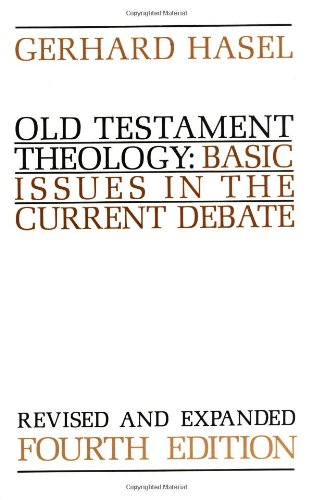A Brief Summary From Books At A Glance
By Joshua K. Smith
About the Author
Gerhard Hasel (1935-2004) served as professor of Old Testament and Biblical Theology at Andrews University Theological Seminary. He also wrote New Testament Theology: Basic Issues in the Current Debate.
Overview
A clear methodology is the key to developing an Old Testament theology. At the core of this work is a concern for a proper approach to the central issues of the Old Testament. These issues concern the nature, method, function, and purpose and how, historically, there has been a general lack of consensus among scholars which led to a crisis. Hasel’s survey of the significant pitfalls under the historical-critical school of thought is as relevant today in the wake of post-modern and reader response methodologies. This little work provides a serious engagement of scholarship that is helpful to both the professor and the pastor. At the end of this historical survey, Hasel delivers his “multiplex approach” in hopes of providing a way forward in doing Old Testament theology. This fourth edition of Hasel’s work is updated with a more substantial and more comprehensive bibliography of Old Testament theology.
Outline
Abbreviations
Preface
Introduction
Beginning and Development of Theology
The Questions of Methodology
The Question of History, History of Tradition, Salvation History, and Story
The Center of OT and OT Theology
The Relationship Between the Testaments
Basic Proposals For Doing OT Theology
Selected Bibliography
Index of Subjects
Index of Authors
Summary
Introduction
Although this work is not an exhaustive analysis of the issues surrounding the interpretation of the Old Testament, it does sufficiently introduce the current issues and how to navigate them exegetically. By tracing the historical roots of Biblical and OT theology, the exegete is prepared to enter the debate and engage in the formulation of a solution, which is examined in the last chapter of this work.
Chapter One: Beginnings and Development of OT Theology
The development of theological method happens in a particular historical context. While the Reformers did not engage in “Biblical Theology” it served as a necessary step towards its emergence in the approach of O. Glait and Andreas Fischer (ca. 1530). The term Biblical Theology does not appear until the works of Wolfgang Christmann (referenced by Henricus A. Diest), in which, the goal was to provide “proof-texts” to support “systems of doctrine.” Early as 1745, there is a distinction between “Biblical Theology” and dogmatics. However, Johann Gabler’s inaugural address (originally written in Latin) is the first recorded expression of a distinction between Biblical and Dogmatic theology.
The approach to OT theology changes in the age of the Enlightenment. Rationalism became the ultimate criterion and new hermeneutic of biblical interpretation. The radical shift towards literary criticism sought to remove “supernaturalism” and simply view the Bible as a mere ancient document for academic study. It is in this environment that Johann Philipp Gabler (1753-1826) that the tradition of Biblical theology shifts. Gabler provided an inductive framework for doing OT theology: (1) inspiration of the Bible should not be considered, (2) historical, philosophical, and literary criticism best adduce the meaning the concepts found in the Bible, and (3) distinguishing the periods of development of the religion. Rationalism juxtaposed o the historical-critical method trumped until the “history-of-religions” approach published by Julius Wellhausen (1844-1918) in 1878. The focus now concerned the evolutionary development of Israel’s religion as a means of reconstructing the past.
In the last era, the “golden age” (the 1930’s–present), the centrality and major problems continue to find no agreement. Scholars such as L. Köhler and W. Eichrodt focused on a “cross-section” analysis which examined an overarching theme that united the OT corpus. The works concerning OT method and theology explode after the Second World War. Biblical Theology emerges out of the controversy between Fundamentalist and Modernist. B. S. Child’s notes that this moment in America is directly related to the developments and scholarship coming out of European publications.
Chapter Two: The Question of Methodology
What is the proper method for interpreting the OT and how does relate to a biblical theology of the OT? This chapter surveys the complicated history and development of this question. There are two main components necessary for answering this question: (1) is OT theology a descriptive and historical enterprise, and (2) is OT theology a normative and theological enterprise? Mostly, the debate is between a “what it meant” and “what it means” approach to interpreting the OT. However, as D. H. Kelsey noted that, the results vary and work on interrelations. Both Jewish and Christian scholars have wrestled with these interrelations and work towards a method that does not make a false dichotomy of the two approaches.
What are some of the methodological approaches. . .
[To continue reading this summary, please see below....]The remainder of this article is premium content. Become a member to continue reading.
Already have an account? Sign In
